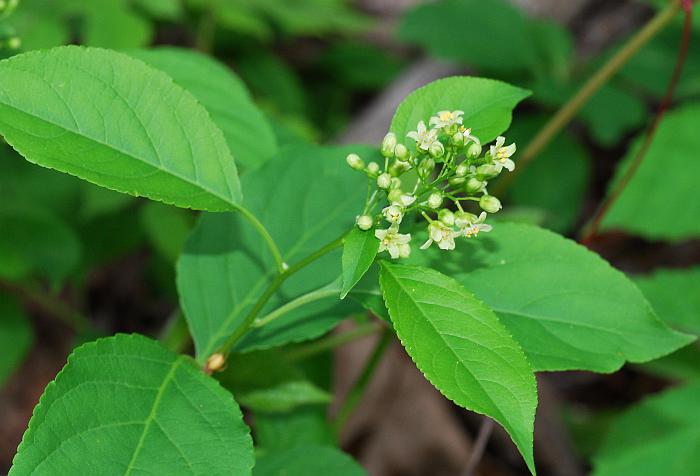Celastrus scandens L.
American Bittersweet

Native
CC = 3
CW = 3
MOC = 68
© SRTurner
Celastrus scandens L.American Bittersweet | |
 |
Native CC = 3 CW = 3 MOC = 68 |
© SRTurner |
|
Family - Celastraceae Habit - Liana, perennial, sometimes incompletely or completely dioecious. Stem - Stems to 20 m, twining on other vegetation. circular in cross section. Bark light gray. Leaves - Alternate, simple, petiolate. Blades generally elliptic or obovate, margins bluntly toothed, glabrous. Upper surface dark green, lower surface lighter.
Inflorescences - Terminal clusters of 12-40 flowers.
Flowers - Flowers usually imperfect. Sepals 5, 1.0-1.5 mm long. Petals 5, 3-4 mm long, 1.0-1.5 mm wide, narrowly oblong, rounded at the tip, greenish white. Staminate flowers with 5 stamens, the filaments 1.5-2.0 mm long. Pistillate flowers with minute staminodes, the ovary usually with 3 locules and 2 ovules per locule. Style short, stout, the stigma deeply 3-lobed.
Fruits - Fruits roughly globse, 8-10 mm in diameter, 3-lobed, dehiscent by 3 valves, these with the outer surface orange at maturity, the inner surface pale yellow to nearly white.
Flowering - May - June. Habitat - Bottomland and mesic forests, bluffs, marginal areas of prairies and glades. Origin - Native to the U.S. Lookalikes - Celastrus orbiculatus. Other info. - This is the only species of Celastrus which is native to North America. It can be distinguished from the exotic C. orbiculatus by its narrower leaves, terminal inflorescences, and orange (rather than yellow) fruit valves at dehiscence. It is found scattered throughout most of Missouri. Across the U.S. it is mostly found in the north and east, and is entirely absent from several western states. Photographs taken at St. Joe State Park, St. Francois County, MO, 5-13-2015; at Valley View Glade Natural Area, Jefferson County, MO, 5-8-2017; and at Klondike County Park, St. Charles County, MO, 11-30-2013 (SRTurner). |